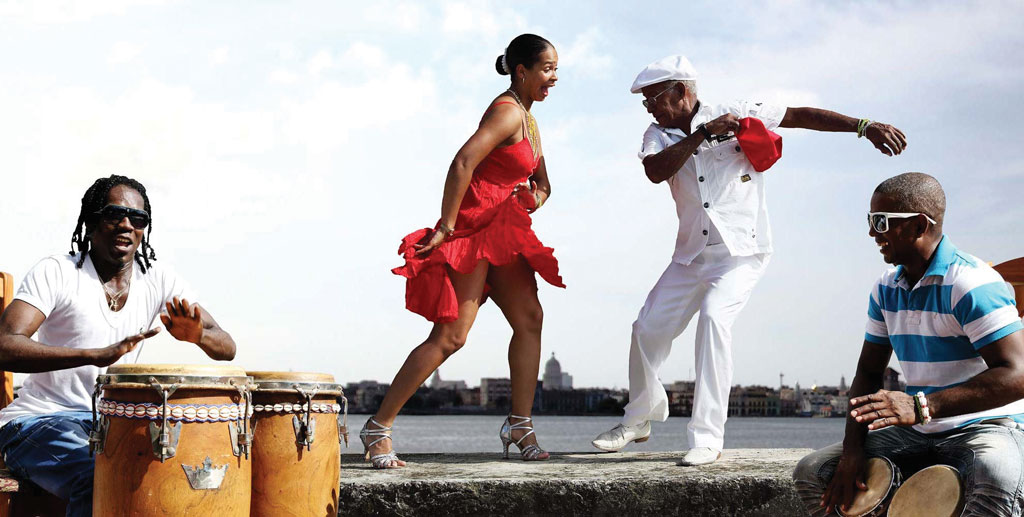Many people are of the notion that Cuban rumba originated in slave plantations.
Interestingly, the dance started in solares (crowded living quarters) or poor communal buildings, the places where freed slaves lived when slavery was abolished in 1886.
Rumba began as a disregarded type of get-together and it was also a synonym of “party”. At the time, most of the slaves were people of African descent and they would play music and chant while dancing very rhythmic dances.
At times rumba refers to the music which includes the singing and the percussions used and at other times it refers to the dance.

The two together form the core of traditional African-Cuban performance.
The rumba music is very rhythmic and the musicians perform it with three unique drums: the quinto, tres golpes and the salidor which all differ in sound and size.
On some occasions, wooden boxes are annexed as drums. Other instruments that make the rumba troupe complete are claves, which can be replaced by spoons. Others also use chekeres (rattles) or marugas (iron shakers).
One must understand that rumba was a way the people bonded after they became freed slaves.
The central patios of the communal buildings they lived in instantly transform into the venue for the ‘party – the moment someone starts drumming on a wooden box.
This was the origination of the solar rumba, which is rumba in its ‘most original form’.
Another would respond by striking spoons or sticks and eventually the room is filled with people moving rhythmically to the music.
It is safe to understand why many people would rather not associate themselves with rumba because it reminds them of a time when the slaves and their descendants would gather naturally in the solares to have a rumba party.
However, that was the natural scenario for rumba as opposed to the more artistic versions we see today being performed in ballrooms, theaters and on international platforms.
It was not until the government that assumed power in 1959 brought about changes that the perceptions people had about rumba begun to change.

For a very long time, people associated the dance with vulgarity. It was seen in a negative light as a form of vulgar cultural expression of poor and uneducated people.
Today, rumba forms an integral part of Cuban culture and it has been adopted into the curriculum of dance academies.
Reputable dance companies like Danza Contemporanea and Conjunto Folklorico Nacional de Cuba have stellar rumba numbers in their choreographies.
There are different ways to dance rumba now as compared to the original solar rumba. A first-timer witnessing the dance might not easily tell the versions apart if careful attention is not paid.
The first version is the Columbia, which is a more powerful and acrobatic style of rumba. From its inception, it was exclusive to men only but now many women also dance the Columbia.
Some say it is a variation of breakdance where the younger generation has added individual tricks and styles to it. It is the type that can easily be used in a dance battle where one mocks the dance of the other, showing off their physical might and intricate dance moves.
Following the Columbia is the Guaguanco. It is a more sensual variation of rumba usually seen during couple performances in ballrooms. The man tries to woo the woman with his moves in order “to inject her with his seed (a move known as “vacunao,” which translates as vaccination).”
The woman then retaliates coyly by moving away from him trying to avoid physical contact. This is the underlying concept that keeps guaguanco going.
The third type of rumba, Yambu, is usually reserved for the elderly. The moves are more age-appropriate for them because it is a slower form of rumba.










